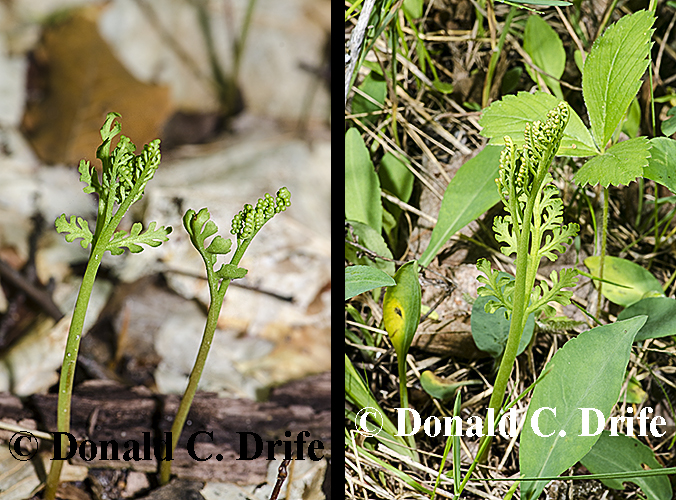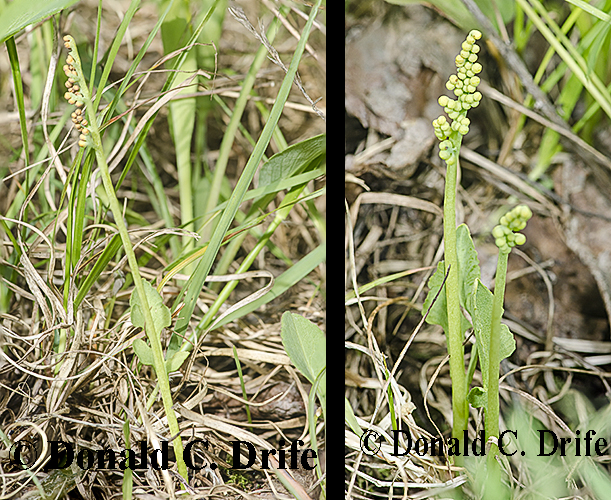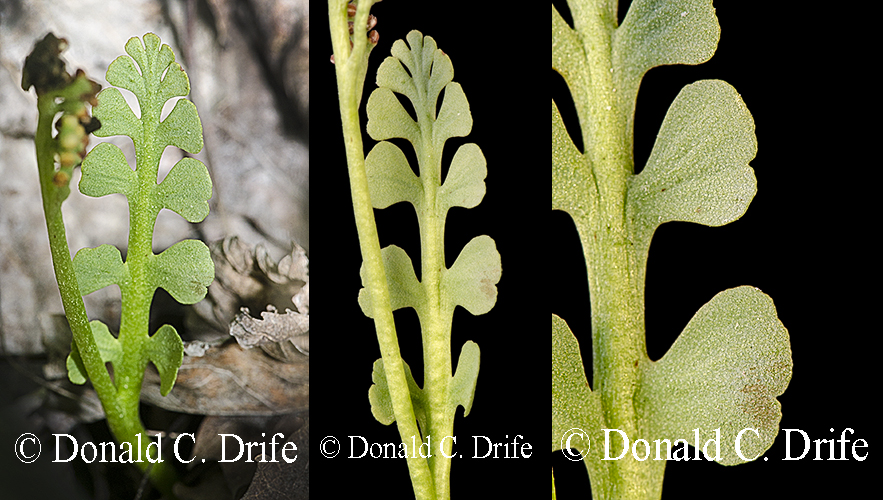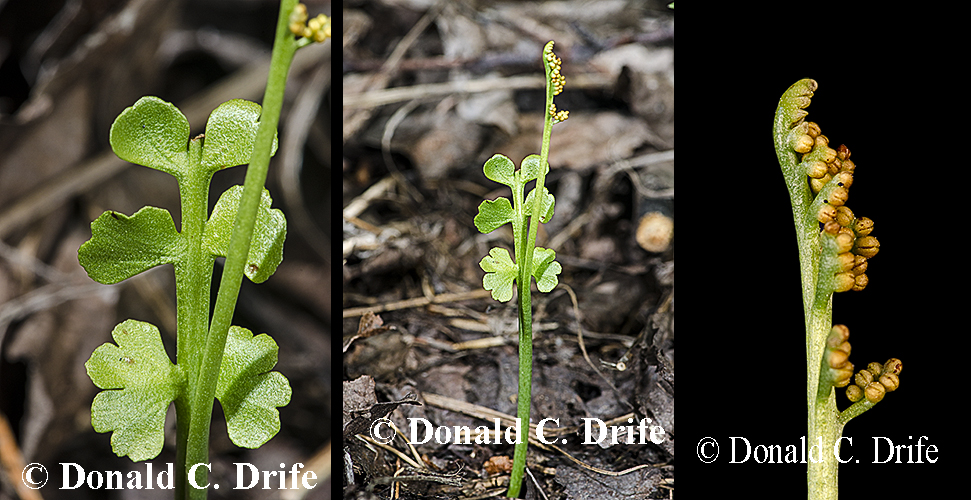Eleven species of Moonworts (Botrychium) have been recorded from Michigan. They are small ferns and the distinctions between the species are subtle. This post shows specimens of each species. The specimens with a black background were collected by my wife and I and the identifications were verified by Dr. Warren (Herb) Wagner. Herb used different names for some of the taxa, but the identifications remain the same. I used these study collections for years and photographed them before I give them to the University of Michigan Herbarium. The specimens with the white backgrounds are collections from the Herbarium. I hope that these will help botanists studying this fascinating group.
Daniel Palmer’s Michigan Ferns & Lycophytes should be consulted by anyone interested in this genus. His charts are fantastic and help explain the characteristics of the species. I cannot improve on his species descriptions. Dr Donald Farrar from the Ada Hayden Herbarium has information on Moonworts including species found outside of Michigan. My earlier post gives more information about Moonwort habitats.
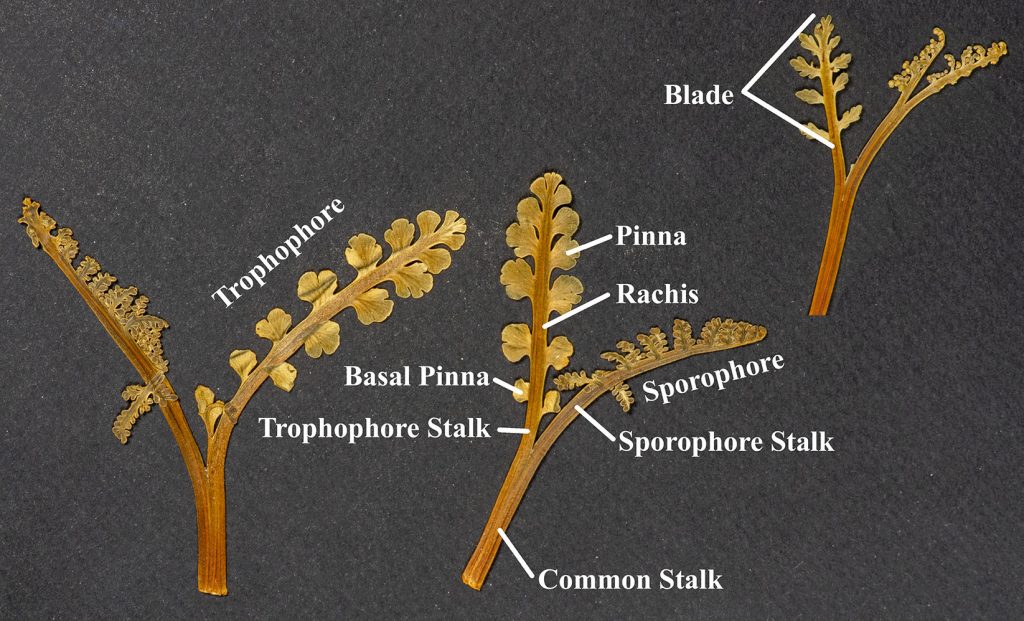
I seldom use common names for Moonworts. I had to look them up for this blog. In the field we refer to them by their specific names or shortened specific names. For example, “I found Matricary, Simplex, and Campestre.”
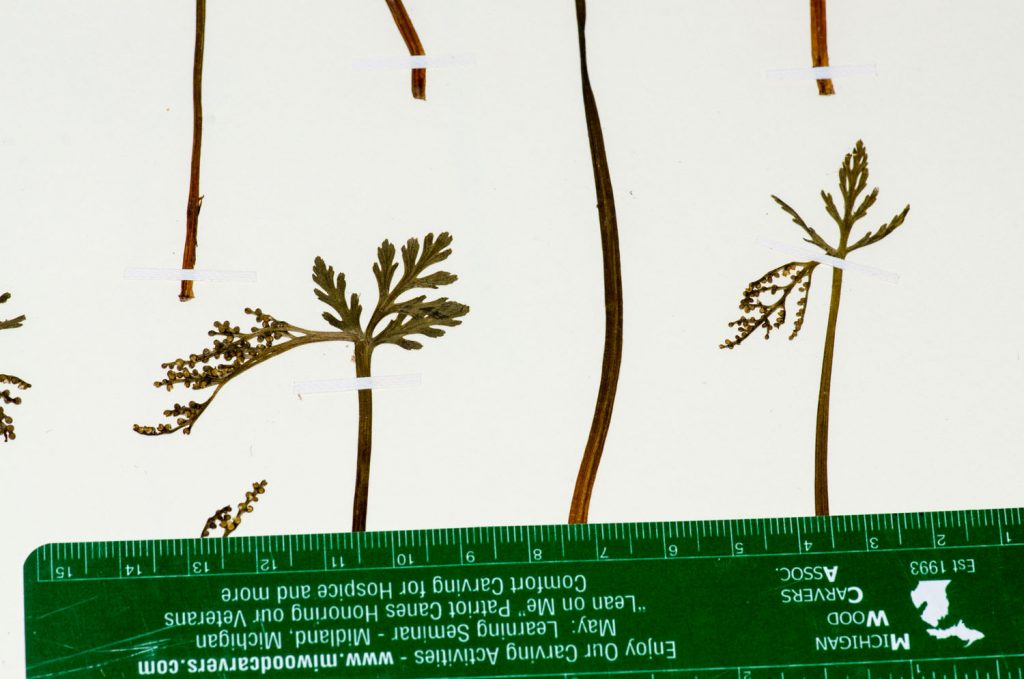
Lance-leaved Moonwort (Botrychium angustisegmentum) has a triangular, deep green, sessile, trophophore (sterile segment). The teeth on its segments are pointed.
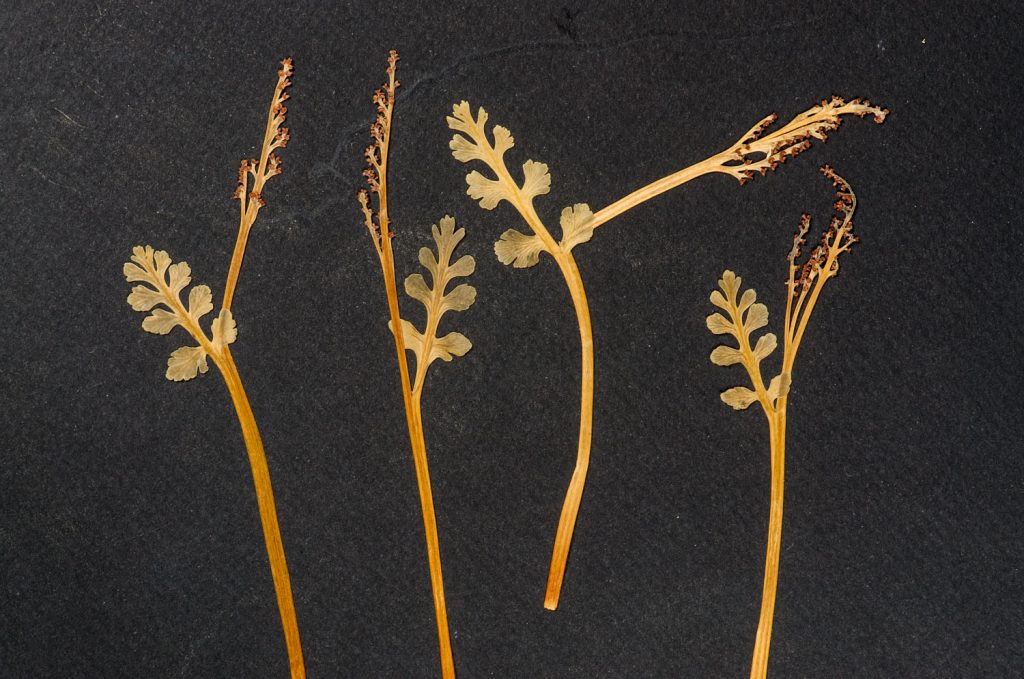
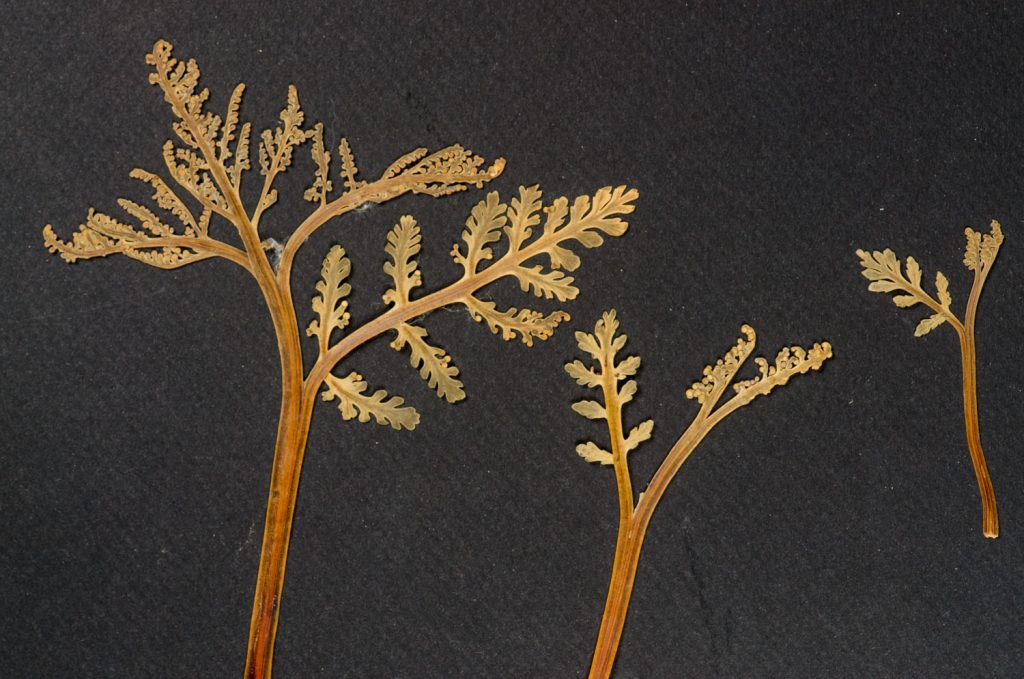
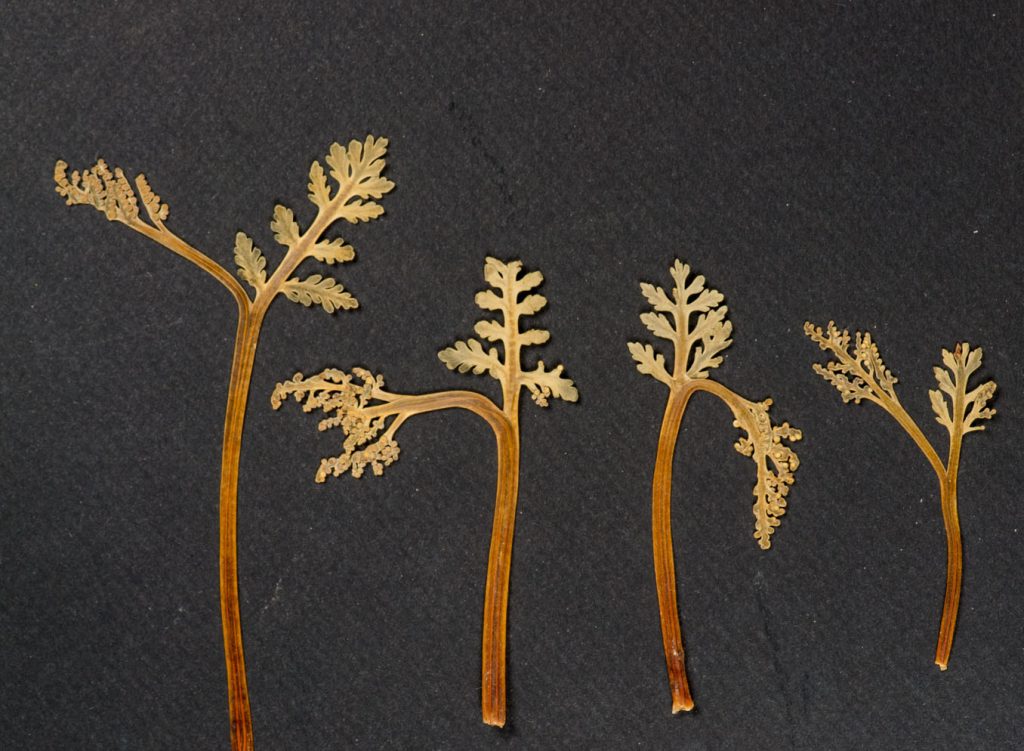
Daisy-leaved Moonwort (B. matricariifolium) is a highly variable species and probably still needs to be split into additional species. When I first met Herb in 1975 he shared with me his goal of learning the limits of this species. Its trophophore is always stalked, has blunt teeth, and the basal pinnae are not normally larger than the next pair.
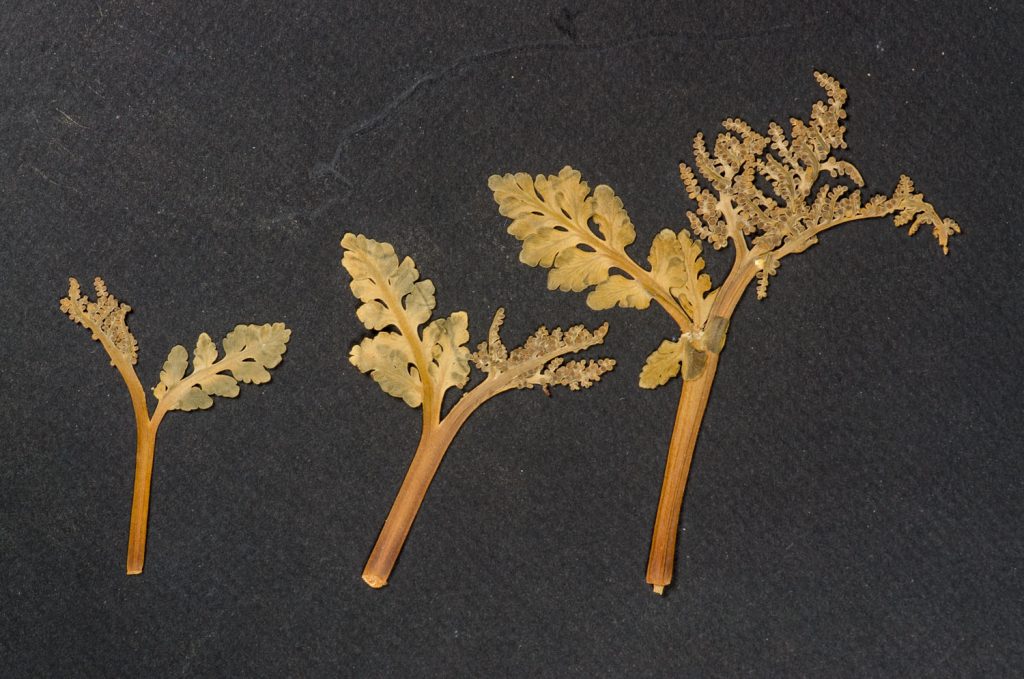
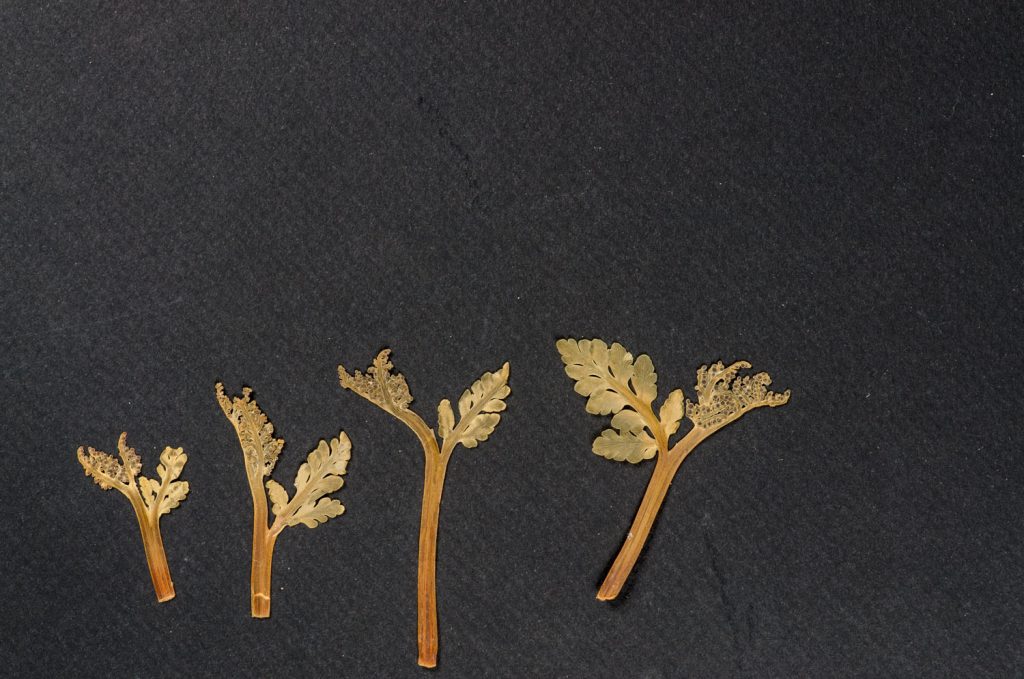
Michigan Moonwort (B. michiganense) resembles Daisy-leaved Moonwort except the basal pinnae on the trophophore are elongated. See Palmer’s book for further distinctions.
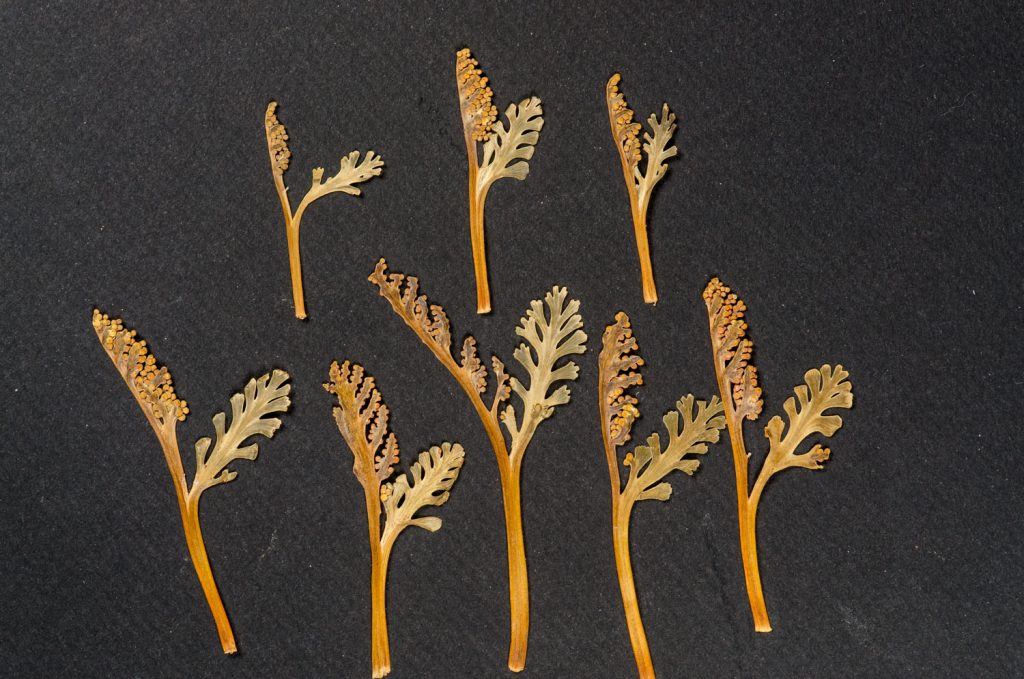
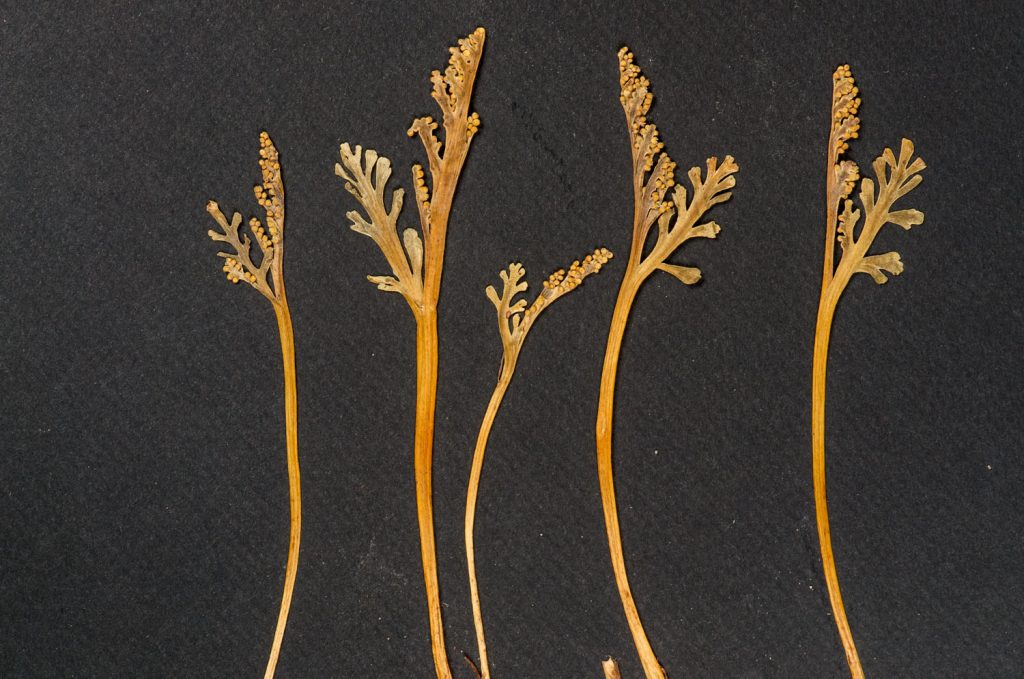
Dune Moonwort (B. campestre) is our earliest Moonwort. I have found it limp on the ground, its spores shed, while other species are still developing. It is greenish-yellow and the pinna (divisions of the trophophore) have teeth at their tips.
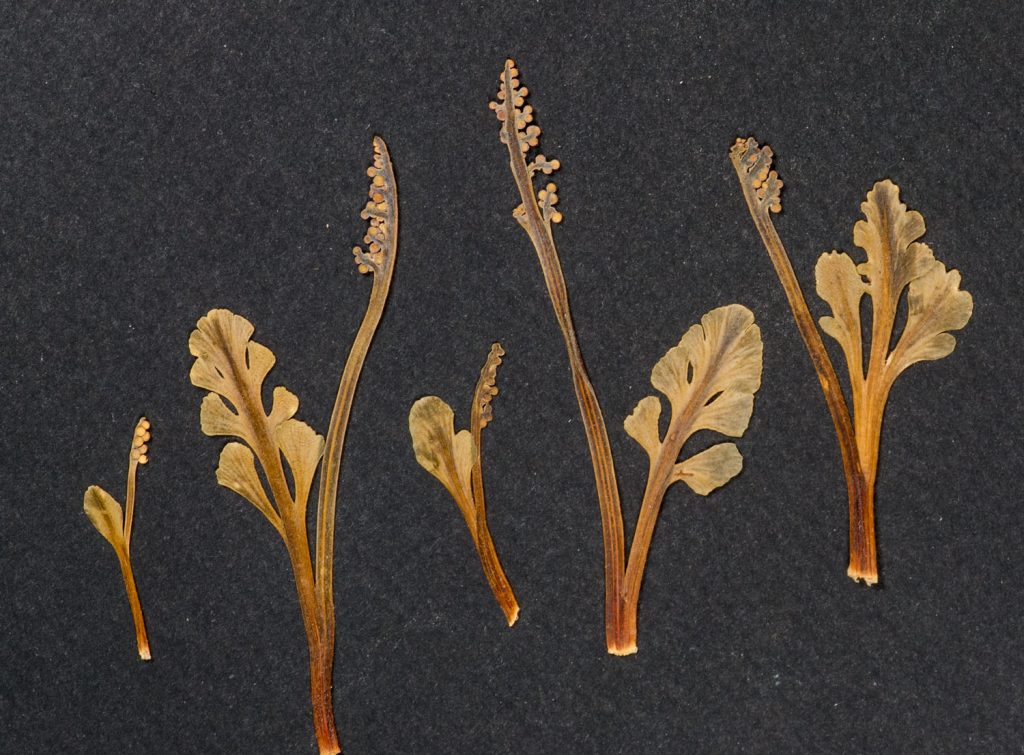
In Least Moonwort (B. simplex) the trophophore and sporophore split off near the base of the plant. The trophophore is the least divided of the Moonworts.
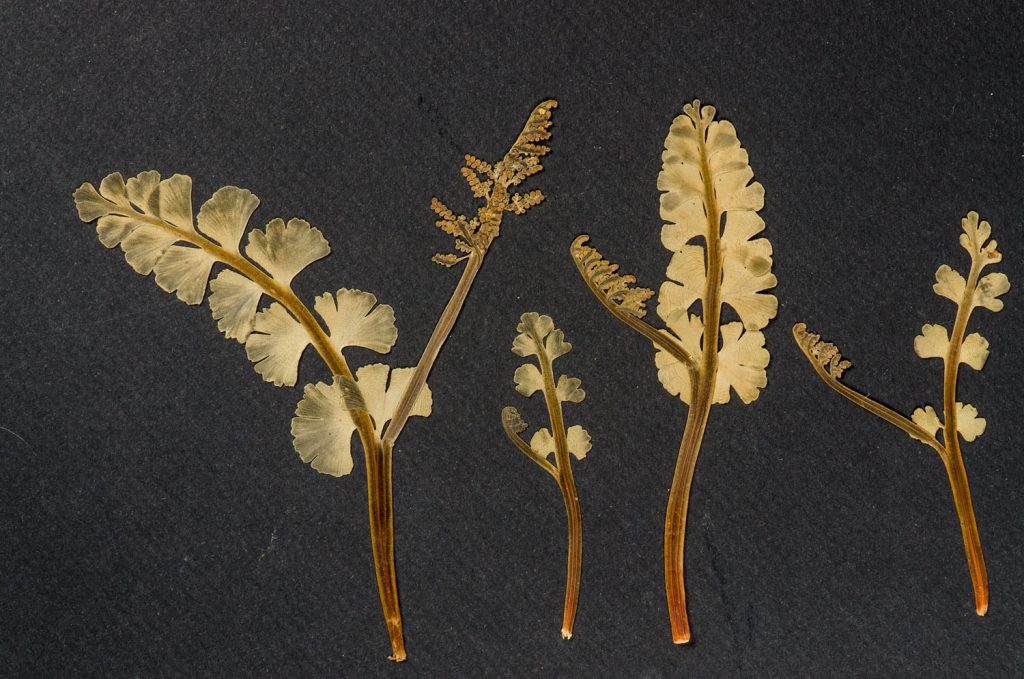
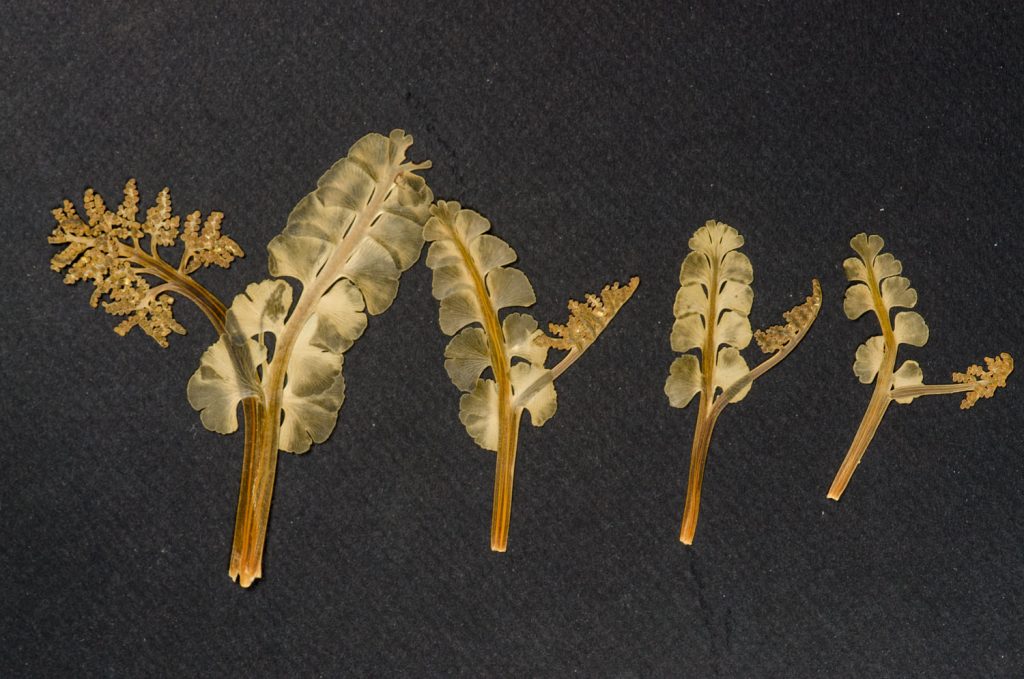
New World Moonwort (B. neolunaria) has crescent shaped pinnae nearly straight across its base and that almost overlap each other.
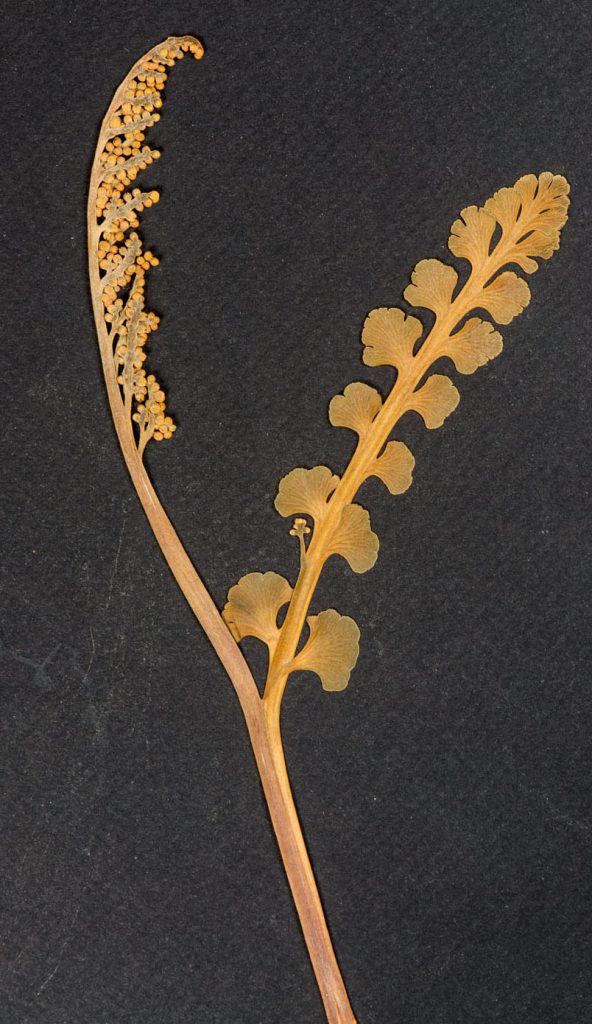
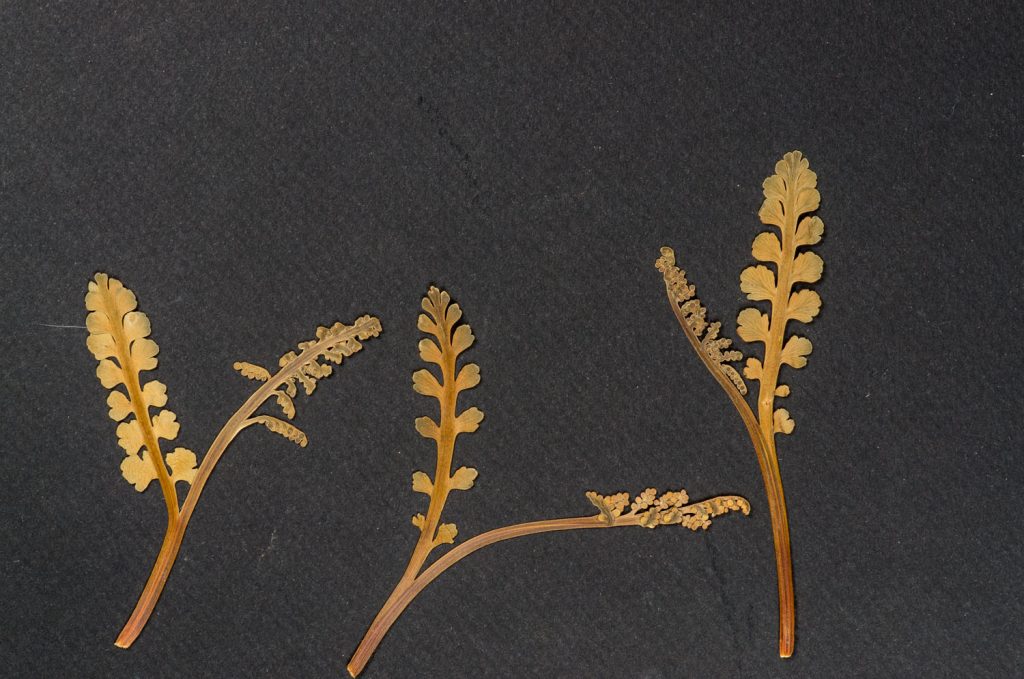
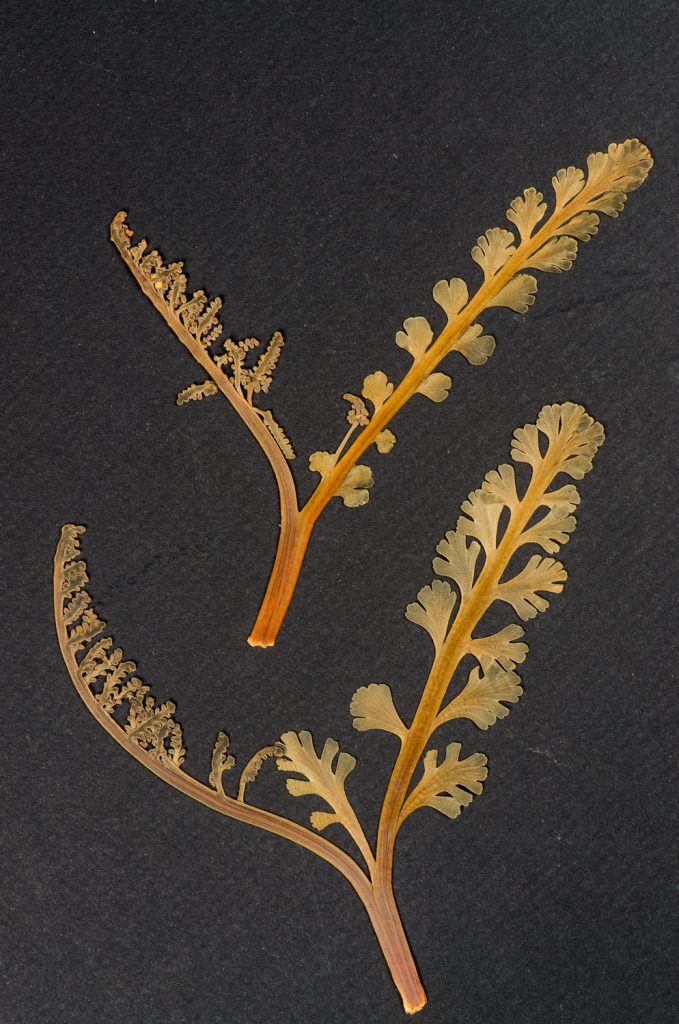
Mingan Moonwort (B. minganense) has pinna that angle about 120 degrees at their base and are well spaced. We found some large specimens with divided pinna in the eastern Upper Peninsula that we originally thought were a new species.
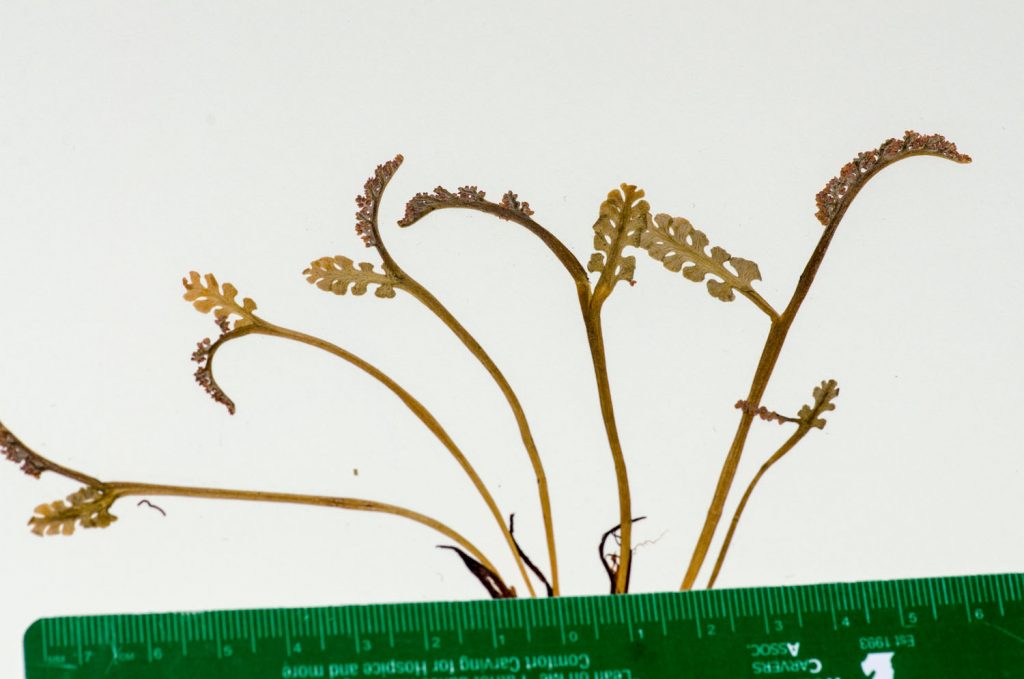
Pale Moonwort (B. pallidum) is distinct in the field with its blue-green color. It is seldom taller than 5 cm [2 inches] and normally has fewer than 5 pinna pairs. The base of the pinna is angled at about 90 degrees.
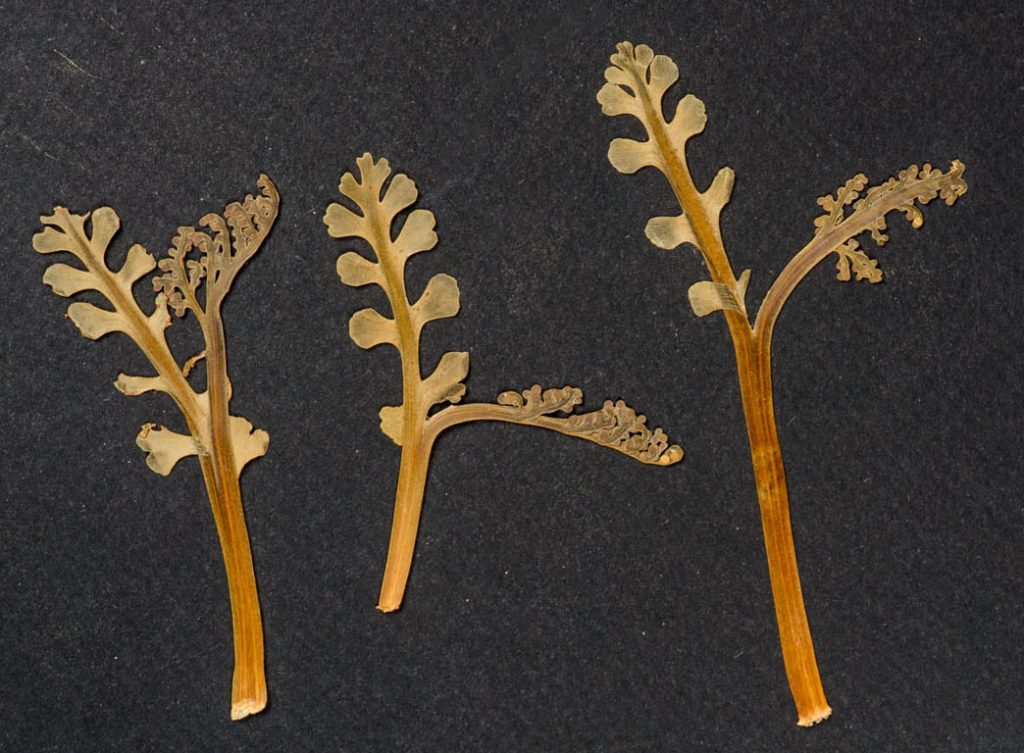
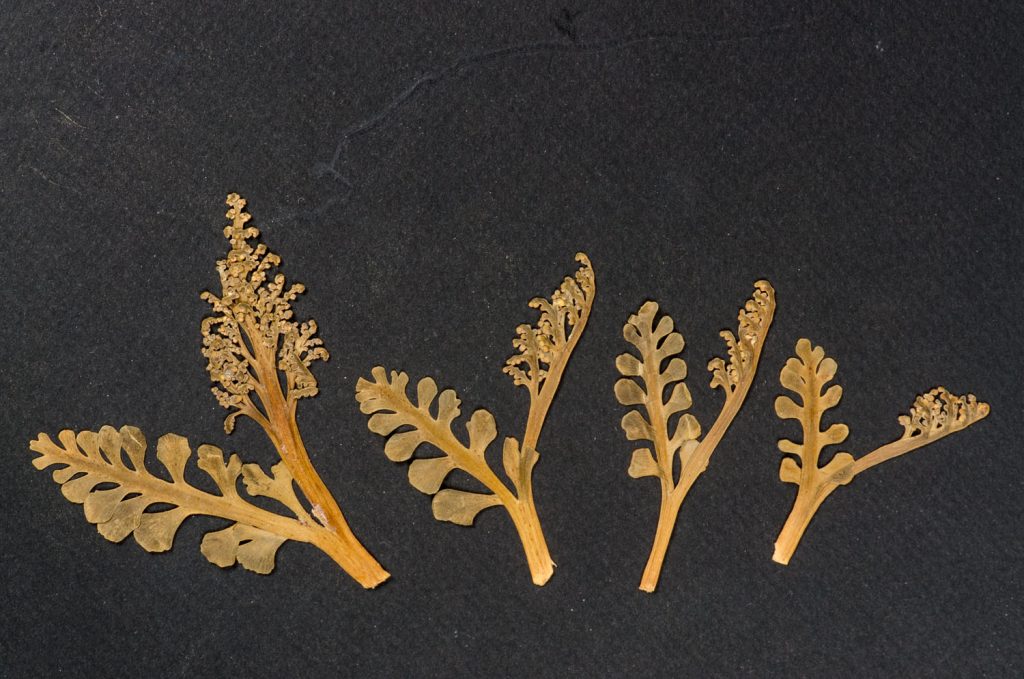
Spatulate Moonwort (B. spathulatum) has pinna that are cupped and not flat. Carelessly pressed specimens often have folded pinna. Normally the pinna have rounded teeth.
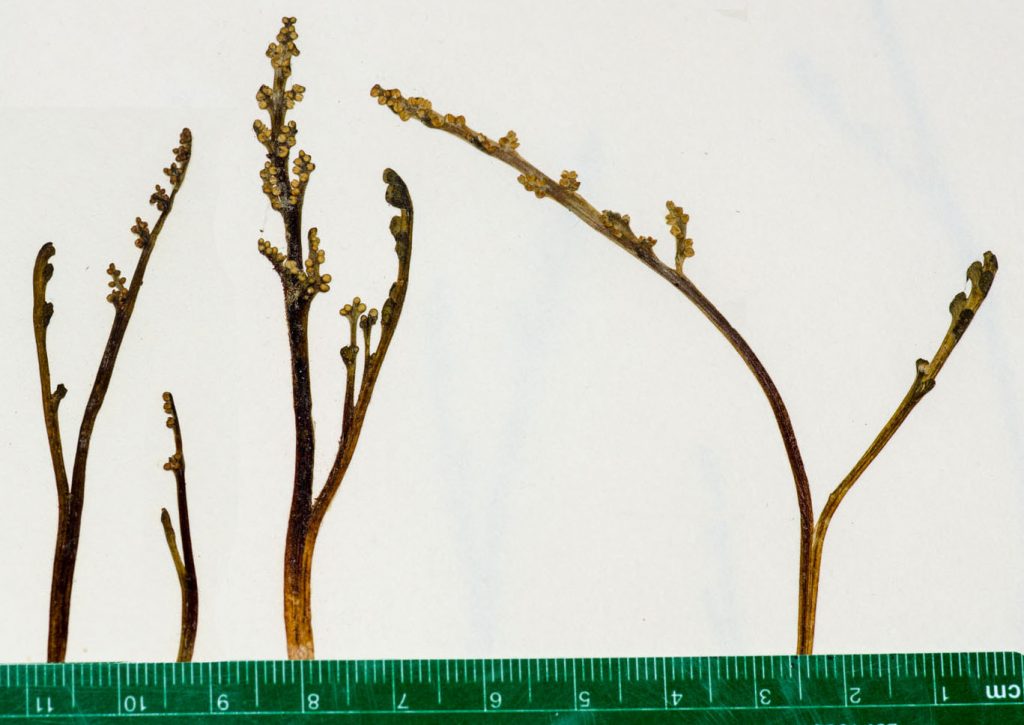
The Little Goblin (B. mormo) is a dense woodland species. It grows in leaf litter and sometimes the plants develop under the leaves. I have found plants by carefully lifting the leaf litter. They are the most succulent of the Moonworts. The first-time I saw the Little Goblin, Bob Preston and I crawled the Sable Falls trail, on our hands and knees, in the pouring rain, looking through the leaf litter. It took us several hours to cover the half-mile trail. We found the plants on the way out.
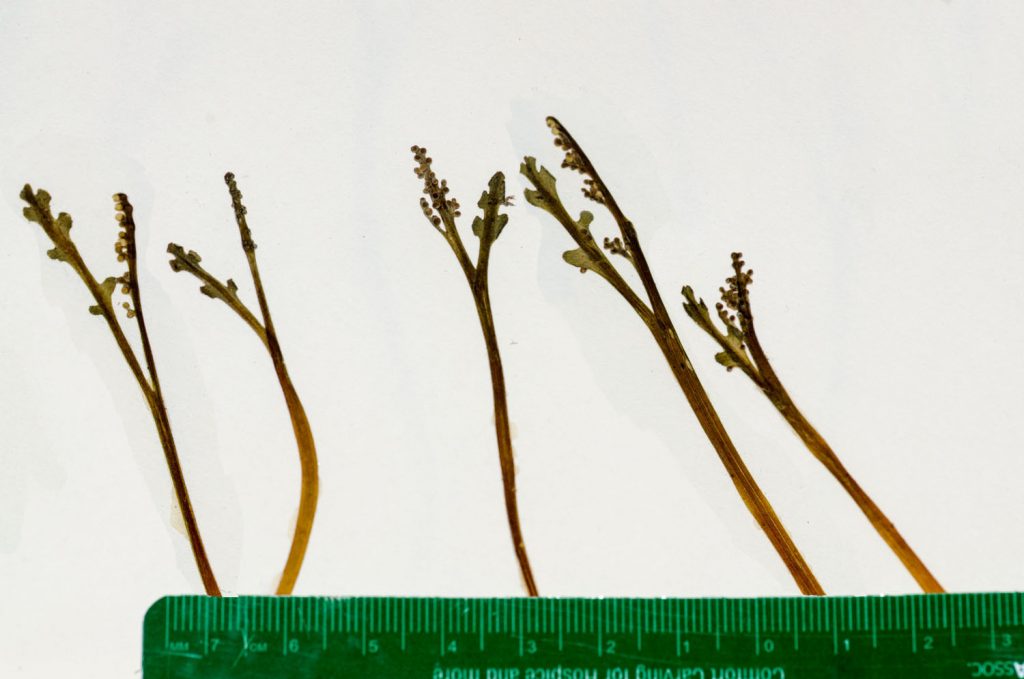
Shade-loving Moonwort (B. tenebrosum) is similar to the Little Goblin. Shade-loving Moonwort is an open forest species often growing at the edge of a wetland. The trophophore and sporophore split at least half-way up the plant.
I hope this post is helpful to fellow “Botrychiators.” When I first learned Michigan Moonworts there were five highly variable species. I learned the others gradually as we split them off. The group is challenging both to find and then to identify. Good luck and happy botrychiating.
Copyright 2020 by Donald Drife
Webpage Michigan Nature Guy
Follow MichiganNatureGuy on Facebook


